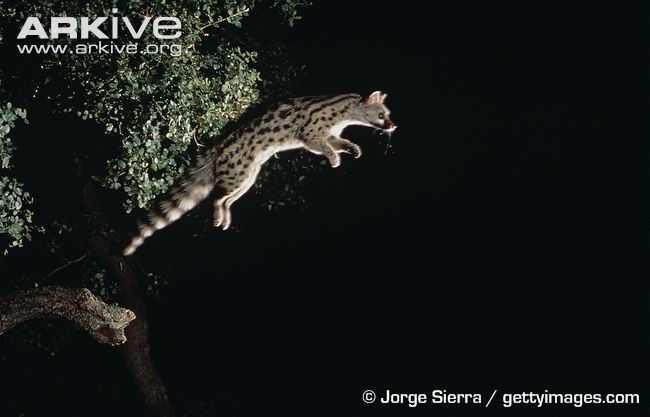Form & Function
Common genets are omnivorous, cat-like creatures that are anywhere from 82 to 105 centimeters long and around 1.4 to 2.5 kilograms (Arkive Organization, 2014). These creatures can be easily recognized by their long, slim bodies that are covered in cheetah-like spots along with their long tails that have numerous black rings, similar to lemurs. They are covered in light colored fur with five lines of spots along the sides of their bodies.
Common genets are quadrupeds that react to environmental stimuli by the use of their senses, especially sight and smell. Genets have large eyes and ears to aid in the detection of predators and prey during the night in their habitat. Common genets have glands called sebaceous glands in their foreleg, thigh, neck, and cheek regions (Larivière et al., 2001). These glands allow the genets to mark their scent, claiming their own home territory. Genets mainly adapt to their environment by locating or creating shelter for themselves. (To learn more about common genet foraging activity click here.)
Common genets are similar to cats in many different ways. These animals have semiretractable claws, making them expert climbers and hunters (Arkive Organization, 2014). Common genets, like cats, tend to kill their prey with a powerful bite to the neck. They are mostly nocturnal foragers, hiding in crevices and small caves during the day, and coming out at night to hunt. There foraging activities may change slightly from season to season depending on the prey available, but are usually consistant year-round. These organisms tend to be loners, living by themselves as opposed to living in a pack.
Click here to continue on to our Reproduction page!
